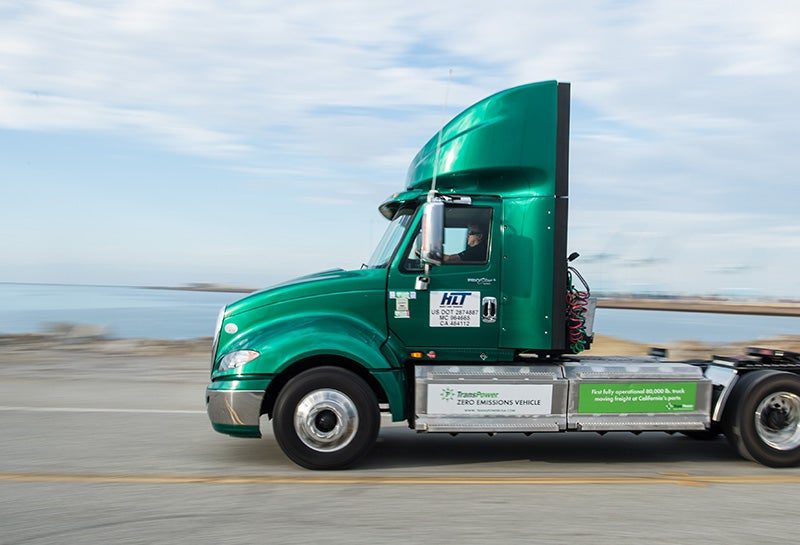EPA approves California plan to require electric trucks
Rule says about half the trucks sold in California must be all-electric by 2035, but industry group warns that charging stations aren’t ready for the change.

Federal regulators today granted the state of California permission to set tighter vehicle emissions standards than national standards, clearing the way for the state to require that about half the trucks sold in California must be all-electric by 2035.
Specifically, the standards set by the California Air Resource Board (CARB) stipulate that 55% of delivery vans and small trucks, 75% of buses and larger trucks, and 40% of tractor-trailers and other big rigs sold in the state would have to be all-electric by 2035, according to published reports.
California says the new rule is necessary to enforce better engine emission standards for heavy-duty vehicles, which can cause public health hazards like asthma and lung disease due to diesel pollution.
Today’s approval of that argument by the U.S. Environmental Protection Agency (EPA) could have national implications, according to the environmental law organization Earthjustice. Six other states have already followed California’s lead since the Advanced Clean Trucks (ACT) rule passed an initial state vote in 2020, leading to adoption in New York, New Jersey, Washington, Oregon, Massachusetts, and Vermont. Those regions are home to some of the largest ports in the nation, and together account for about 20% of heavy-duty vehicle sales in the country, the group said.
However, some logistics industry professionals warned that the policy is too ambitious, saying that the infrastructure needed to charge all those electric vehicles (EVs) won’t be broadly installed for five to 10 years. If the law is enforced before that time, it could have the unintended effect of driving thousands of truckers out of the industry and exacerbating a longstanding driver shortage, according to a statement by Priyesh Ranjan, CEO of the AI-powered supply chain automation provider Vorto and integrated logistics platform 5F.
Likewise, transportation industry group the American Trucking Associations (ATA) said the “unrealistic” emissions rule could harm the industry nationwide. “By granting California’s waiver for its so-called ‘advanced clean trucks’ rule, the EPA is handing over the keys as a national regulator,” ATA President and CEO Chris Spear said in a release. “This isn’t the United States of California, and in order to mollify a never satisfied fringe environmental lobby by allowing the state to proceed with these technologically infeasible rules on unworkable and unrealistic timelines, the EPA is sowing the ground for a future supply chain crisis.”
According to the ATA, a better way to reach zero emissions is for industry groups to work closely with the EPA and allow more time for requisite new technologies to develop. Spear said that such collaboration has already produced a 98% reduction in truck emissions over the past 35 years.
But in the face of that debate, some of the largest private industry groups in the logistics sector are already moving ahead with plans to buy electric trucks and build charging stations. For example, the real estate firm Prologis has been installing dozens of electric truck charging installations on its logistics properties, including two California sites operated by logistics provider Performance Team, which will soon be able to simultaneously charge up to 38 of its Volvo VNR Electric Class 8 battery-electric trucks.
And the U.S. Postal Service last month began ordering thousands of battery electric vehicles (BEVs) to replace its aging, gasoline-powered mail trucks. USPS in February awarded contracts for 9,250 Ford E-Transit vans—part of its plan to buy 66,000 BEVs by 2028—and ordered more than 14,000 charging stations to be deployed at Postal Service facilities.
Related Articles

Copyright ©2024. All Rights ReservedDesign, CMS, Hosting & Web Development :: ePublishing